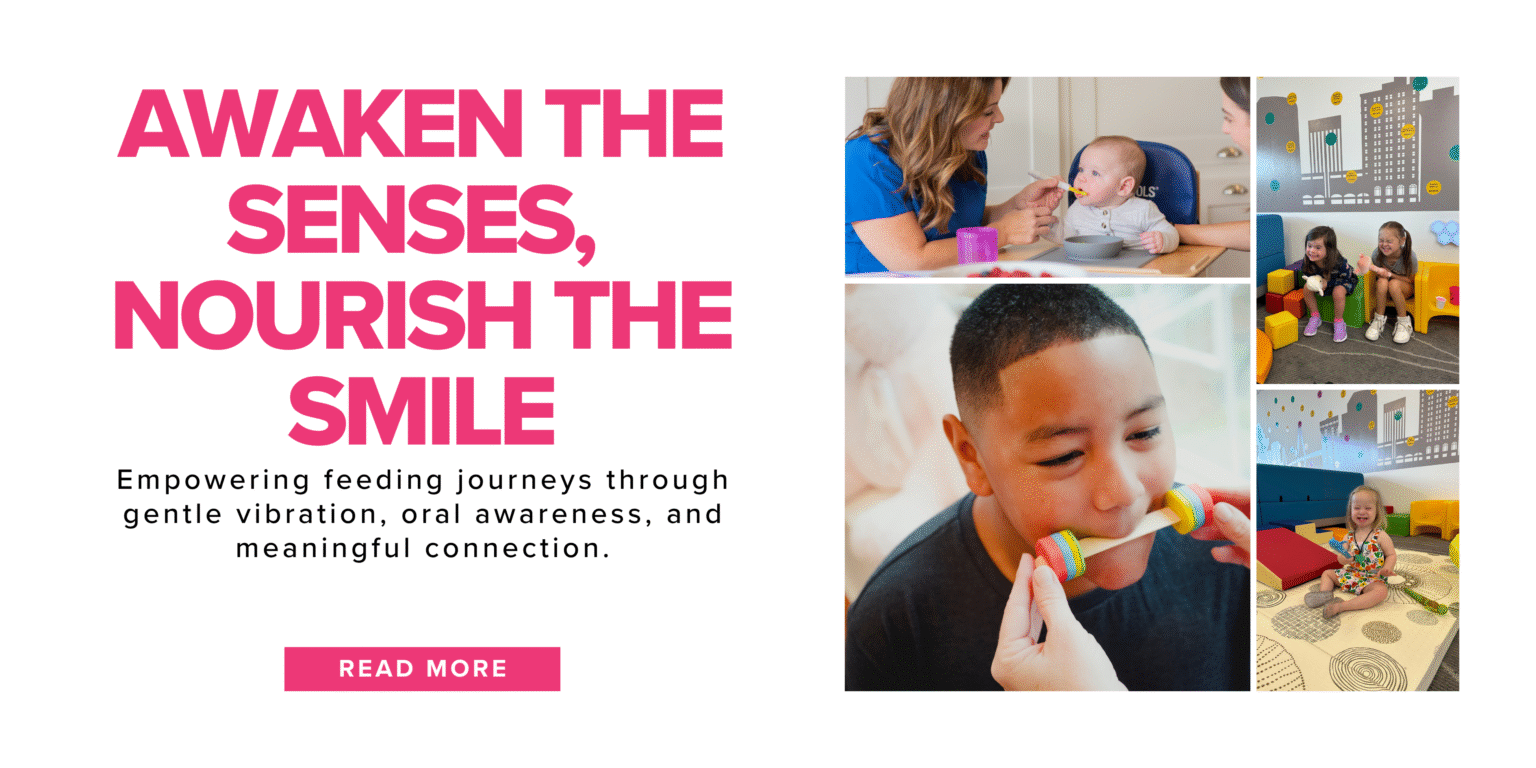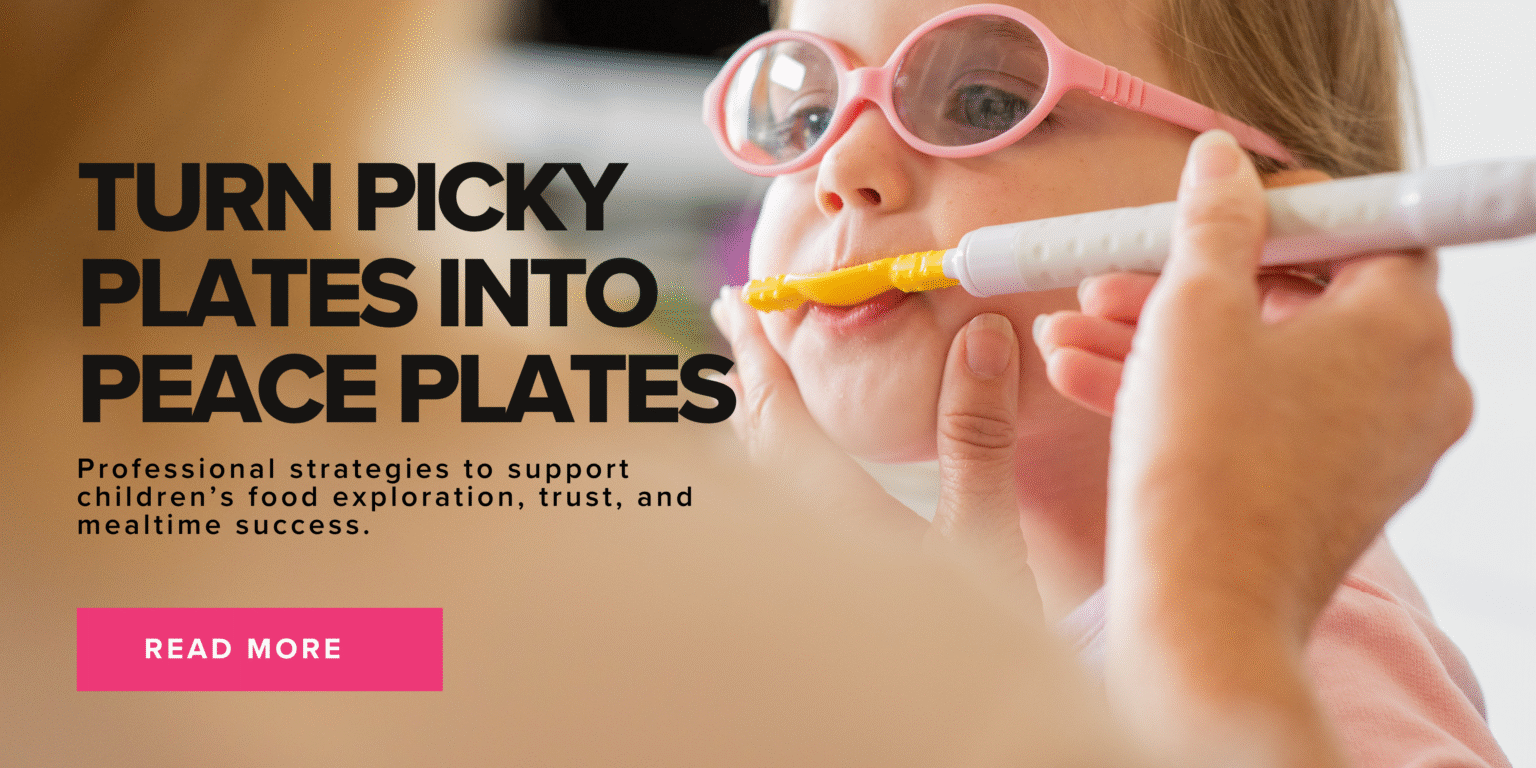By: Robyn Merkel-Walsh, MA, CCC-SLP & Sara Rosenfeld-Johnson, MS, CCC-SLP This poster was presented at the 2015 annual ASHA Convention, Session #9333, Poster Board #602.

INTRODUCTION
Presentation explores 1) defining Non-Speech Oral Motor Exercises, 2) defining Oral Placement Therapy, 3) understanding the difference between NSOME and OPT, 4) clinical implications for Evidenced Based Practice.
Two widely used models of articulation therapy include the traditional and phonological models (Bowen, 2005). While studies suggest that the phonological model may prove more positive results than the traditional model (Klein, 1996), Van Riper’s Phonetic Placement Approach may be more useful for individuals who are not be able to achieve placement cues (Van Riper, 1978). Many therapists supplement phonological and traditional models with oral motor activities to help achieve placement cues, especially for those individuals with muscle-based and motor-based diagnoses (Marshalla, 2007). Over the past decade, there has been an ongoing debate, through secondary research studies between those who do not support the use of Non-Speech Oral Motor Exercises (NSOME) and those who support the use of Oral Placement Therapy (OPT). Neither camp has large sampled double-blind studies to support their case; however, both sides of the debate have supported their hypothesis via literature review and surveys (Bahr & Rosenfeld-Johnson, 2010; Lof & Watson, 2005).
LEARNER OUTCOMES
1. Participants will be able to differentiate a NSOME from an OPT technique.
2. Participants will be able to define the three stages of a phonetic placement cue.
3. Participants will be able to use at least three oral placement cues in order to facilitate speech movements.
DISCUSSION
NSOME are movements which are not related to speech sounds, while OPT therapy only includes speech-like movements. OPT follows the principles of Van Riper’s Phonetic Placement Therapy (PPT), and uses tactile cueing to help individuals who cannot respond to visual-verbal treatment cues. Children with Oral Placement Disorder (OPD) cannot imitate targeted speech sounds using auditory and visual stimuli (ex. look, listen, and say what I say). They also cannot follow specific instructions to produce targeted speech sounds (e.g. put your lips together and say /m/). Although the term Oral Placement Disorder is new, the concepts surrounding the term have been discussed by a number of authors and clinicians (Bahr & Rosenfeld-Johnson, 2010). OPT facilitates the muscle placement to produce the targeted standard speech sound. If the client can produce standard speech using adequate placement and endurance using only auditory and visual cueing, OPT would not be included in that client’s treatment plan.
OPT is a modern extension of Phonetic Placement Therapy (PPT) as taught by Van Riper (1978) and follows The Feedback Model by Mysak (1971). It is based on a very common sequence:
1. Facilitate speech movement with the assistance of a therapy tool (ex. horn, tongue depressor);
2. Facilitate speech movement without the therapy tool and/or tactile-kinesthetic technique (cue fading);
3. Immediately transition movement into speech with and without therapy tools and/or tactile-kinesthetic techniques.
| NSOME | OPT |
| As quoted from Dr. Gregory Lof in 2006:”No speech sound requires the tongue tip to be elevated toward the nose; no sound is produced by puffing out the cheeks; no sound is produced in the same way as blowing is produced. Oral movements that are irrelevant to speech movements will not be effective as speech therapy techniques.“ | Puffing air in cheeks during blowing is not used in OPT.Abdominal grading for phonatory control, jaw stability and jaw-lip-tongue dissociation are important for speech sound production.The use of a therapeutic horn can help shape the articulators into the placements required for the bilabial sounds /m, b, p/. That tool is quickly faded once the individual has the muscle-memory skill to produce the correct oral placement without the tool in the mouth. |
| As quoted from Dr. Gregory Lof in 2003:”There is no relevance to the end product of speaking by using an exercise of tongue wagging, because there are no speech sounds that require tongue wagging.“ | This movement is not related to speech so should not be used in speech therapy sessions. Tongue wagging is not used in OPT.Stimulation of the lateral margins of the tongue with vibration, elicits elongation of the tongue and can assist in creating the tongue tip tension needed to elevate the tip to the incisive papillae for / n, t, d, l /. |
| As quoted from Dr. Gregory Lof in 2009:”NSOME encourages gross and exaggerated range of motion, not small, coordinated movements that are required for talking.“ | OPT only works on small, coordinated movements that are similar to speech.Blowing a bubble with appropriate placement of the articulators assists with lip rounding using the correct jaw posture for the high jaw vowels /w/, /u/ and /o/. We immediately practice those sounds without the therapy tool as per Van Riper’s PPT. |
Clinical data supports the relationship between OPT and speech clarity. The graph below reflects data collected from sessions with a 6 year old male with labial paresis. Lip closure on a flat-mouthed horn and bilabial production progress were monitored. When lip closure on the horn improved so did bilabial production. In sessions where lip closure was not as positive bilabial clarity decreased.

CONCLUSION
Dr. Gregory Lof’s research has stated that the methods used in Van Riper’s Phonetic Placement Approach, are not in fact considered NSOME (Lof, 2009). It is important to explore current clinical techniques to determine what activities are considered unrelated to speech production, as opposed to those activities that in fact are an extension of Phonetic Placement Therapy (Marshalla, 2007). If therapists understand the current debate, and that a NSOME is not the same as OPT; there would be less confusion amongst professionals in regard to evidence based practices when working towards improved speech clarity. Clinicians must use EBP to decide if they want to reject the use of a therapy technique based on the evidence, and look into the most appropriate treatment parameters based on the recipient of the treatment, and the diagnosis (ASHA, 2005). This new understanding of how OPT is used to create the standard placement for speech production would then encourage university-based researchers to explore why practicing SLPs report they use this therapy with good results. The next step would be large sample, double blind studies that would definitively address the use of OPT for clients with muscle-based speech clarity disorders.
REFERENCES
American Speech-Language-Hearing Association. (2005). Evidence-Based Practice in Communication Disorders [Position Statement]. Available from www.asha.org/policy.
Bahr, D., Rosenfeld-Johnson, S. (2010). Treatment of children with speech oral placement disorders (OPDs): a paradigm emerges. Communication Disorders Quarterly, XX(X), 108.
Bowen, C. (2013). Controversial practices and intervention for children with speech sound disorders. Retrieved from: http://www.speech-language-therapy.com/pdf/nsome2013.pdf
Klein, E.S. (1996). Phonological/traditional approaches to articulation therapy: a retrospective group comparison. Language, Speech, and Hearing Services in Schools, 27, 314-323.
Lof, G. (2003). Oral motor exercises and treatment outcomes. SIG 1 Perspectives on Language Learning and Education, Vol. 10, 7-11.
Lof, G. L., & Watson, M. (2005). Survey of universities teaching: oral motor exercises and other procedures. Poster presented at the annual meeting of the American Speech-Language-Hearing Association, San Diego, CA.
Lof, G.L. (2006). Logic, theory and evidence against the use of non-speech oral-motor exercises to change speech sound productions. Invited presentation at the ASHA Annual Convention, Miami, FL. Nov. 17.
Lof, G.L. (2009). Nonspeech oral motor exercises: an update on the controversy. Presentation at ASHA Annual Convention, New Orleans, LA.
Marshalla, P. (2007). Oral motor techniques are not new. Oral Motor Institute, 1(1). Available from www.oralmotorinstitute.org.
Mysak, E. (1971). Speech pathology and feedback therapy. Charles C. Thompson Publisher.
Van Riper, C. (1978). Speech Correction: Principles and Methods (6th Edition). Englewood Cliffs: Prentice-Hall.
Young, E. H., & Hawk, S. S. (1955). Moto-kinesthetic speech training. Stanford, CA: Stanford University Press.



